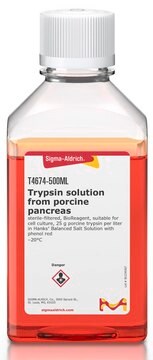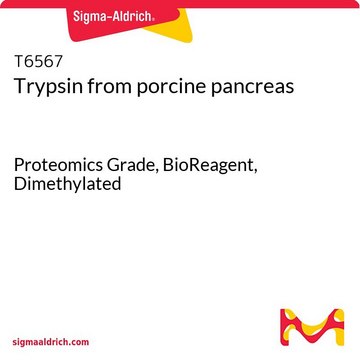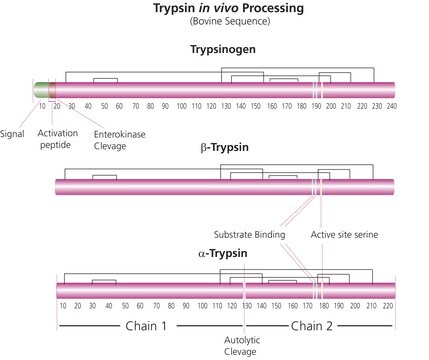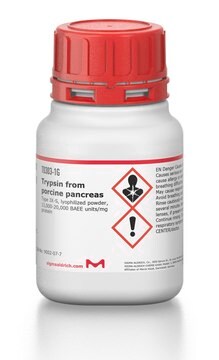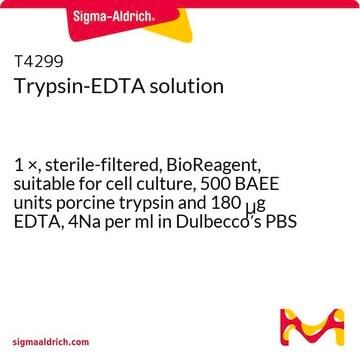T4549
Trypsin solution from porcine pancreas
sterile-filtered, BioReagent, suitable for cell culture, 25 g porcine trypsin per liter in 0.9% sodium chloride
About This Item
Recommended Products
biological source
Porcine
Quality Level
sterility
sterile-filtered
product line
BioReagent
form
solution
mol wt
23.4 kDa
technique(s)
cell culture | mammalian: suitable
pH
7.6
shipped in
dry ice
storage temp.
−20°C
Looking for similar products? Visit Product Comparison Guide
Application
Biochem/physiol Actions
Serine protease inhibitors, including DFP, TLCK, APMSF, AEBSEF, and aprotinin, amongst others, will inhibit Trypsin.
Caution
Unit Definition
Preparation Note
Signal Word
Danger
Hazard Statements
Precautionary Statements
Hazard Classifications
Eye Irrit. 2 - Resp. Sens. 1 - Skin Irrit. 2 - STOT SE 3
Target Organs
Respiratory system
Storage Class Code
10 - Combustible liquids
WGK
WGK 1
Flash Point(F)
Not applicable
Flash Point(C)
Not applicable
Choose from one of the most recent versions:
Already Own This Product?
Find documentation for the products that you have recently purchased in the Document Library.
Customers Also Viewed
Protocols
Trypsin is frequently used in cell dissociation from adherent surfaces. We offer a wide variety of trypsin solutions to meet your specific cell line requirements, as well as protocols, troubleshooting ideas, and more.
Related Content
Trypsin is an enzyme in the serine protease class that consists of a polypeptide chain of 223 amino acid residues. Multiple sources, grades and formulations of trypsin specifically designed for research applications are available.
Our team of scientists has experience in all areas of research including Life Science, Material Science, Chemical Synthesis, Chromatography, Analytical and many others.
Contact Technical Service

